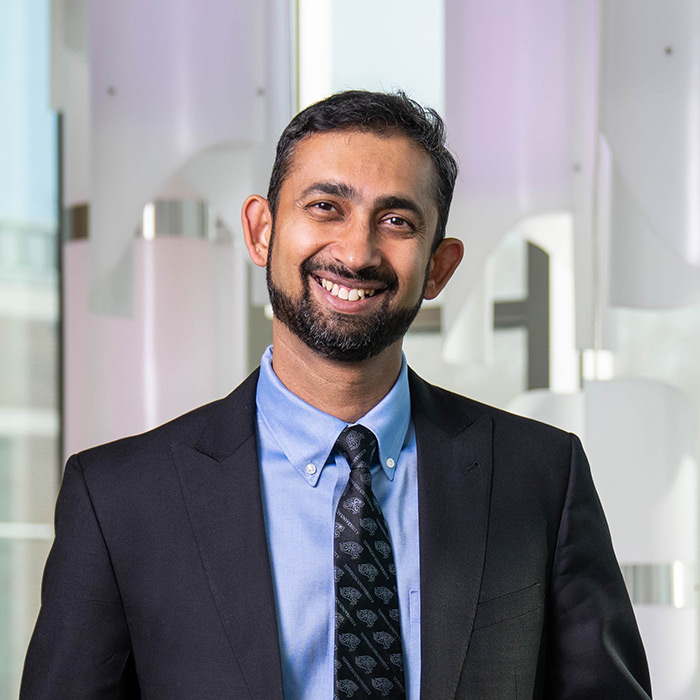Research—TU to R2: The Evolution to High Research Activity
As TU seeks designation as a high research activity institution, TU Magazine will each issue bring readers a story of high-impact research. We’re debuting this feature with a Q&A with Sidd Kaza, the university’s inaugural associate provost for research and dean of graduate studies.
Abstract— Kaza took on his new job in July after serving as the chair of the Department of Computer and Information Sciences in TU’s Fisher College of Science and Mathematics. In his new role, he advances the transformative influence that research plays in students’ lives and inspires faculty and students to create a productive research environment. The goal: furthering TU’s impact as an anchor institution for the region and state and achieving Carnegie Classification R2: High Research Activity institution status.

A Conversation with Sidd Kaza
Q: What is the Carnegie Classification?
A: It is used by researchers, policymakers and administrators for informing grant-making
and federal and state funding of institutions. It was initiated in 1973 by the Carnegie
Commission
on Higher Education. Simply put, it is a way to classify universities by the types
of degrees awarded.
Q: How often are Carnegie Classifications determined?
A: Updates are completed every three years. The 2021 update classified just under 3,900 institutions; 133 were R2—which is a diverse set of institutions.
Q: What is TU’s current classification?
A: Master’s Colleges and Universities: Larger Programs (or M1) awarding more than 200 master’s degrees per year. TU awards more than 900, so we are clearly at the top of that classification.
Q: How will TU earn the R2 Carnegie Classification?
A: R2 universities have high research activity, which means they award at least 20 research doctoral degrees annually and have at least $5 million in total research expenditures. This funding can come from a combination of external sources and institutional investments including support for students. In 2021–22 TU had $8.78 million in research expenditures and awarded 16 research doctoral degrees. So, we are very close but we are aiming higher, because these criteria are subject to change.
Q: How will R2 attainment further TU’s reputation?
A: In addition to having high research activity, R2 universities also hold high value for professors’ roles as educators first. At TU, this means most courses will continue to be taught by professors who are involved in research. The institution’s emphasis on research will create additional and more robust opportunities for students to participate in engaged learning experiences in the classroom and outside it. TU as a R2 institution will remain a comprehensive environment with many faculty doing basic, applied and experimental research (including in learning sciences) and others primarily focusing on innovative teaching in the classroom.
Q: Why is the R2 designation important externally and to the university community?
A: It emphasizes that TU faculty perform research at world-class levels while furthering the university’s mission. It allows our students to get involved in a new kind of research-based learning, opening different opportunities for them. The university will have increased funding opportunities for faculty, staff and students. We will continue to serve our region’s needs not just through our academic programs but with research on topics that matter to our students and our community. Our investment in research will add yet another exciting dimension to the student experience at Towson University.
